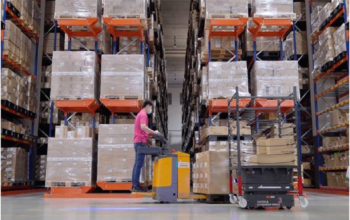In the ever-changing business landscape, one key component to success is making smart financial decisions that maximise profitability and ensure long-term growth. Capital allowances are a critical tool in the arsenal of any savvy business owner looking to optimise their investments and reap the benefits of tax relief. Explore the concept of capital allowances in the UK and discuss how businesses can leverage this valuable tax benefit to enhance their bottom line and drive sustainable business growth.
Understanding Capital Allowances for Business Assets
What are capital allowances? Capital allowances are tax deductions that businesses can claim on certain types of assets they purchase for their business. These deductions allow businesses to offset the asset’s cost against their taxable profits, reducing the tax they must pay. This can significantly benefit businesses investing in equipment, machinery, vehicles, and other crucial assets. By taking advantage of capital allowances, businesses can effectively lower their tax burden and improve their cash flow.
In the UK, capital allowances are available for various assets, including plant and machinery, business vehicles, and certain types of buildings. The amount of capital allowances that can be claimed will depend on the type of asset, its value, and the period over which it is expected to be used. Businesses can claim capital allowances on new and second-hand assets as long as they are used for the business. By understanding how capital allowances work and which assets are eligible, businesses can make more informed investment decisions and maximise their tax savings.
Capital allowances are a valuable tool for businesses looking to make strategic investments and manage their finances effectively. By leveraging capital allowances, businesses can improve their cash flow, reduce tax liabilities, and ultimately enhance profitability. Business owners need to clearly understand capital allowances and how they apply to their investments to make the most of this valuable tax relief opportunity.
Identifying and Categorizing Capital Expenditures
Businesses must first understand what constitutes a capital expenditure to effectively identify and categorise capital expenditures that qualify for allowances. Capital expenditures are investments in assets that provide long-term benefits to the business, such as property, equipment, or machinery. These assets are not intended for immediate consumption or resale but rather to be used in business operations over an extended period.
Once businesses have identified their capital expenditures, they must categorise them according to the specific criteria set forth by the UK tax authorities. This may include determining the useful life of the asset, the method of depreciation, and any special allowances or deductions that may apply. By accurately categorising capital expenditures, businesses can ensure that they maximise their tax benefits and take full advantage of available allowances.
By carefully identifying and categorising their capital expenditures, businesses can maximise their tax benefits and make more informed decisions about their investments. By understanding the intricacies of capital allowances and how they apply to different types of assets, businesses can effectively plan for the future and ensure long-term financial sustainability. Businesses can optimise their investments and drive sustainable growth for years through strategic tax planning and capital expenditure management.
Long-term Financial Benefits of Capital Allowances
One of the significant long-term financial benefits of capital allowances is the potential for tax savings. By claiming capital allowances on eligible assets, businesses can reduce their taxable profits, leading to lower tax liabilities and increased cash flow. This, in turn, allows businesses to reinvest the saved funds back into their operations, fund expansion initiatives, or simply improve their financial position. Over time, these tax savings can have a compounding effect, contributing to the business’s overall financial health and sustainability.
Another long-term financial benefit of capital allowances is enhancing asset value. By offsetting the cost of capital assets through capital allowances, businesses can improve their return on investment and increase the value of their assets. This can positively impact the balance sheet, improve financial ratios, and potentially attract investors or lenders. Capital allowances can help businesses maximise the value of their investments, leading to greater long-term profitability and success.
Real-life Applications of Capital Allowances in Business
One real-life example of how businesses have successfully used capital allowances is in the construction industry. When a company invests in new plants and machinery to improve productivity and efficiency, it can claim capital allowances on these assets, reducing its taxable profits and overall tax liability. By taking advantage of these allowances, construction companies can invest in new equipment and technology with the knowledge that they will see a return on their investment through tax savings.
Another example can be seen in the hospitality sector, where businesses regularly invest in refurbishing and upgrading their properties to attract more customers and stay competitive in the market. By claiming capital allowances on the assets acquired during these renovations, such as furniture, fixtures, and fittings, hotels and restaurants can offset the costs of these improvements against their taxable profits. This provides financial relief for the business and incentivises further investment in the property to keep it up-to-date and appealing to customers. This demonstrates how capital allowances can be valuable for businesses across various sectors to drive growth and profitability.




